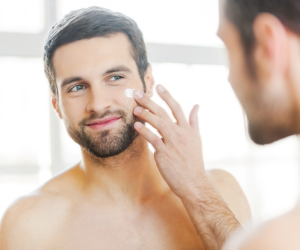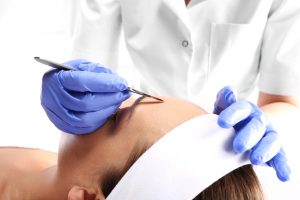Now that it is coming into the warmer months it is more important than ever to protect and look after your skin. In Australia the average person has been exposed to a significant degree of sun exposure by the time they reach their mid-20s which can have detrimental impacts on your skin. This accumulated damage over years contributes to pigmentation, premature egeing, fine lines and wrinkles and of course skin cancers.
What is Pigmentation?
Pigmentation is one of the most common skin concerns that both men and women struggle with every day. Pigmentation is essentially areas of the skin which have become darker or lighter in colour than the surrounding skin, resulting in a patchy and uneven skin tone. This can be caused by some form of inflammatory response causing melanocytes (the cells that create pigment in our hair/skin etc.) to miss behave.
There are multiple forms of pigmentation all triggered by different internal and external factor, although there are two main forms that most people encounter throughout their lifetime. The first and most common form being hyperpigmentation.

Hyperpigmentation
Hyperpigmentation is when the skin appears darker than the surrounding areas. It is caused by an over stimulation of melanocytes in the deeper layers of the skin, causing an over production of melanin resulting in darker skin patches. It’s a common skin condition amongst many individuals of all different skin types. Certain forms of hyperpigmentation such as melasma and sunspots generally occur on areas of the skin that have more frequent sun exposure. The main causes of hyperpigmentation are:
- Sun Exposure
- Skin Inflammation
- Melasma
- Reactions to Medication Use
- Medical Conditions
Other triggers and causes can range from, genetics, pregnancy, acne, hormones, skin type and injury to the skin.

Hypopigmentation
Hypopigmentation is the opposite of this; it is when there has been a loss in melanin production resulting in lighter patches compared to the rest of the skin. Hypopigmentation can be caused by injury to the skin or can be a skin condition such as vitiligo or albinism. Generally, hypopigmentation is a genetic condition but, in some cases, can be caused by severe environmental conditions or acquired conditions.
How Can I Protect My Skin?
There are a few simple things you can do to prevent pigmentation from forming or worsening, such as avoiding unprotected sun exposure. Another simple yet effective tip is to ensure you’re wearing you are wearing SPF30+ everyday, no excuses! It’s also important to avoid picking at your skin to reduce the risk of injury and triggering an inflammatory response. Yes you heard me! Don’t pick that pimple, your skin will thank you for it later. We all know however that it’s sometimes easier said than done but don’t worry, there are various treatments to help improve the appearance of hypo- and hyperpigmentation. Some of the most effective treatment options to improve preexisting hyperpigmentation include:
- Chemical Peels
- Micro Needling
- A Personalised Skin Care Routine

Since everyone’s skin is different, including the type of pigmentation you have and the cause of it, this means you will need a different prescribed treatment plan and home care to the next person. Here at Skin Deep Cosmetic Clinic, we specialise in complete skin transformations, so you can trust our team of experienced Dermal Therapists and Skin Doctors to take the stress and confusion out of your treatments.
Take the leap to go makeup free this summer! Book a free consultation to discuss your options today and have better skin tomorrow.



